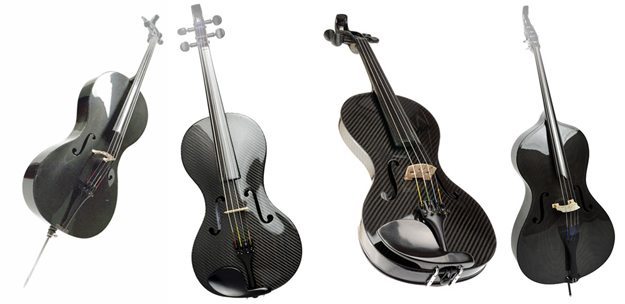Luis & Clark instruments take over the Inauguration! 44 Luis and Clark carbon fiber instruments were used exclusively by The Marine Orchestra during the Inauguration ceremony.
Cold Case: The Sound of Carbon for Yo-Yo Ma?
Susana Raab for The New York Times
January 2009
When the cellist Yo-Yo Ma takes to the inaugural stage on Tuesday, the instrument he will have may take music enthusiasts by surprise. Black, with a single-piece body, neck and peg box, and with no scroll at the top, the cello is a high-tech carbon-fiber instrument designed to withstand the cold.
Created by Luis Leguia and his Massachusetts-based company, Luis and Clark, the cello is unaffected by temperature and humidity, which can crack or split the delicate antique instruments that professionals usually use. Mr. Ma plans to play his Luis and Clark cello if the weather warrants, said his manager, Mary Pat Buerkle. His other cello, a 1733 Montagnana from Venice, is worth more than $2 million. Mr. Ma will be playing a score by John Williams with Itzhak Perlman on violin, Gabriela Montero on piano and Anthony McGill on clarinet. Mr. Perlman could not be reached for comment.
Mr. Ma is not the only inaugural string player using a Luis and Clark instrument. At the “We Are One” concert at the Lincoln Memorial on Sunday, the entire Joint Service Orchestra string section — 44 musicians in all — played the company’s carbon-fiber cellos, violins, violas and basses.
“My cello is a couple hundred years old,” said Staff Sgt. Ben Wensel, a cellist in the United States Army Band, before rehearsing on Friday in 14-degree weather. “I wouldn’t dare take it outside in this.”
Sergeant Wensel said that this would be the first time a major orchestra had exclusively used carbon string instruments. The orchestra is a combination of the Army, Air Force, Coast Guard, Navy and Marine bands.
Mr. Leguia, who studied under Pablo Casals and played cello for the Boston Symphony Orchestra for 44 years, came up with the idea for a composite cello after going sailing on a fiberglass Hobie 16 catamaran. He was struck by how efficiently the boat’s hulls transmitted the sound of the waves. “The greatest instruments can be heard through the din of an orchestra,” he said in a telephone interview. “I saw potential in that.”
The first cello Mr. Leguia built was of fiberglass in 1990. He then moved to carbon, partnering with Steve Clark, a champion sailor and carbon-fiber expert from Rhode Island. Mr. Clark helped refine the design and construction process, and the Luis and Clark cello was born.
About 12 Luis and Clark instruments are manufactured each week at Clear Carbon and Components in Bristol, R.I. The cello costs $7,139. Each instrument takes about a week to build and is handmade of layers of carbon fiber and epoxy. More than 600 have been produced.
As for the sound, Mr. Leguia said that he had tried to maintain the full-bodied sound of top-end instruments, but at a much lower price. A carbon cello, he said has a “flooding, deeper sound,” though “not quite as penetrating” as Mr. Ma’s Montagnana.
René Morel, who deals in fine string instruments in Manhattan, has said the sound is as close as you can get to a traditional top cello like a Stradivarius without being one. The cellist Aldo Parisot, a longtime instructor at the Yale School of Music, has been recommending Mr. Leguia’s cellos to his students for everyday use.
Sergeant Wensel said that his instrument “sounded a little raw at first,” but that “the sound has opened up for me.”
“It’s a good cello,” he added, “not just a good carbon cello.” View the article here.

